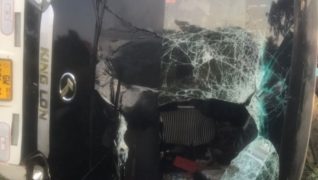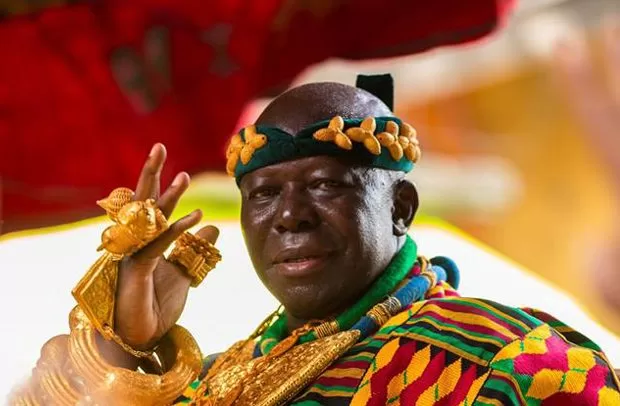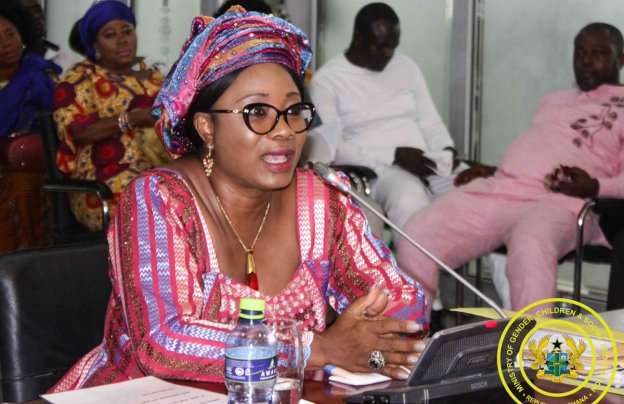Ghana’s Most Beautiful (GMB) contestants for this year took a trip down memory lane on Sunday night to give a historical account of how their respective tribes came into being.
Each of the 16 contestants took turns to educate the hundreds of audience about how their regions came about and gained their names, as well as the efforts of the many forebears who led them to their present day locations.
With different dynamic stage acts, each of the contestants appeared on stage fully clad in clothes depicting how their folks used to dress in the past.
Upper West region’s Yiri narrated how Bussie, a district in the region was founded by her great grand-father Gandiiibu-Naa.
She talked about how Gandiiibu-naa led the fight against slavery and led his people to safety in Bussie.
[caption id="attachment_134909" align="aligncenter" width="721"] YIRI[/caption]
Upper East regional rep, Ayisha came next to tell the story of how the Builsas from the Upper East Region fought against African slave raiders who conspired with foreign slave masters to sell their own people.
[caption id="attachment_134908" align="aligncenter" width="737"]
YIRI[/caption]
Upper East regional rep, Ayisha came next to tell the story of how the Builsas from the Upper East Region fought against African slave raiders who conspired with foreign slave masters to sell their own people.
[caption id="attachment_134908" align="aligncenter" width="737"] AYISHA[/caption]
Western North region’s Saah talked about how the people of Sefwi migrated from the Northern part of modern Africa amidst wars and struggles to settle at ‘‘Sefwi Wiawso’’.
She explained that in the bid to celebrate their liberation from the numerous wars they fought, they coined the name ‘Sefwi Wiawso’ which means, ‘war is over’.
[caption id="attachment_134911" align="aligncenter" width="737"]
AYISHA[/caption]
Western North region’s Saah talked about how the people of Sefwi migrated from the Northern part of modern Africa amidst wars and struggles to settle at ‘‘Sefwi Wiawso’’.
She explained that in the bid to celebrate their liberation from the numerous wars they fought, they coined the name ‘Sefwi Wiawso’ which means, ‘war is over’.
[caption id="attachment_134911" align="aligncenter" width="737"] SAAH[/caption]
Kasha who represents the Savannah region came through with a narration of how founder of the present day Gonjaland, Sumaila Ndewura Jakpa, led a war against their adversaries and subsequently ensured peace prevailed among his people.
[caption id="attachment_134910" align="aligncenter" width="737"]
SAAH[/caption]
Kasha who represents the Savannah region came through with a narration of how founder of the present day Gonjaland, Sumaila Ndewura Jakpa, led a war against their adversaries and subsequently ensured peace prevailed among his people.
[caption id="attachment_134910" align="aligncenter" width="737"] KASHA[/caption]
Eastern region’s Oye talked about the migration routes of communities like Aburi and Akuapem in the Eastern region, as well as the beautiful landscape on the Akuapem mountain and how it attracted tourists to the region.
[caption id="attachment_134916" align="aligncenter" width="737"]
KASHA[/caption]
Eastern region’s Oye talked about the migration routes of communities like Aburi and Akuapem in the Eastern region, as well as the beautiful landscape on the Akuapem mountain and how it attracted tourists to the region.
[caption id="attachment_134916" align="aligncenter" width="737"] OYE[/caption]
North East region’s Yaya who appeared on stage as an old woman, told her ‘grandchildren’ about how the Bimobas in the North East region migrated from Burkina Faso.
She talked about how they fled after the kingdom of Fada-Gurma in which they lived back in Burkina Faso collapsed, making them move away with some of them settling in the North East region of Ghana while others settled in Ivory Coast and other countries.
OYE[/caption]
North East region’s Yaya who appeared on stage as an old woman, told her ‘grandchildren’ about how the Bimobas in the North East region migrated from Burkina Faso.
She talked about how they fled after the kingdom of Fada-Gurma in which they lived back in Burkina Faso collapsed, making them move away with some of them settling in the North East region of Ghana while others settled in Ivory Coast and other countries.
 Representing the Ahafo region, Afia shared the story of how Ahafo came into existence after series of chieftaincy issues, indicating the Ahafo’s moved away to settle on a new land they acquired at a low cost.
This land, she explained, influenced the name ‘Ahafo’ which literally means ‘this place is cheap’. She also highlighted the rich vegetation and wildlife in the Ahafo region.
[caption id="attachment_134917" align="aligncenter" width="737"]
Representing the Ahafo region, Afia shared the story of how Ahafo came into existence after series of chieftaincy issues, indicating the Ahafo’s moved away to settle on a new land they acquired at a low cost.
This land, she explained, influenced the name ‘Ahafo’ which literally means ‘this place is cheap’. She also highlighted the rich vegetation and wildlife in the Ahafo region.
[caption id="attachment_134917" align="aligncenter" width="737"] AFIA[/caption]
Northern Region’s Zara talked about an ancestor, Tohadzie who migrated from Zamfara to the Mali Empire and assisted the people in his new found home. His sons who took after him later traveled with the people to settle in the modern day Dagbon.
[caption id="attachment_134919" align="aligncenter" width="737"]
AFIA[/caption]
Northern Region’s Zara talked about an ancestor, Tohadzie who migrated from Zamfara to the Mali Empire and assisted the people in his new found home. His sons who took after him later traveled with the people to settle in the modern day Dagbon.
[caption id="attachment_134919" align="aligncenter" width="737"] ZARA[/caption]
Oti region’s Nana came through with the migration history of the people of Bonwire Amanfrom who moved from Moree to their present place of settlement in the Oti region.
[caption id="attachment_134922" align="aligncenter" width="737"]
ZARA[/caption]
Oti region’s Nana came through with the migration history of the people of Bonwire Amanfrom who moved from Moree to their present place of settlement in the Oti region.
[caption id="attachment_134922" align="aligncenter" width="737"] NANA[/caption]
Representing the Bono region, Obaapa tells the history of the Bono people and how they moved away from the Akans in search of greener pastures.
[caption id="attachment_134921" align="aligncenter" width="737"]
NANA[/caption]
Representing the Bono region, Obaapa tells the history of the Bono people and how they moved away from the Akans in search of greener pastures.
[caption id="attachment_134921" align="aligncenter" width="737"] OBAAPA[/caption]
Greater Accra’s Otobia took audience down memory lane about how the Gas moved from Ile Ife in Nigeria to settle in the the Greater Accra region.
[caption id="attachment_134924" align="aligncenter" width="737"]
OBAAPA[/caption]
Greater Accra’s Otobia took audience down memory lane about how the Gas moved from Ile Ife in Nigeria to settle in the the Greater Accra region.
[caption id="attachment_134924" align="aligncenter" width="737"] OTOBIA[/caption]
Western regional representative, Esi talked about the migration of the Westerners, highlighting the differences and similarities between the Ahanta’s and Nzemas of the region.
[caption id="attachment_134927" align="aligncenter" width="737"]
OTOBIA[/caption]
Western regional representative, Esi talked about the migration of the Westerners, highlighting the differences and similarities between the Ahanta’s and Nzemas of the region.
[caption id="attachment_134927" align="aligncenter" width="737"] ESI[/caption]
From the Central Region, Ekua spoke about the role of some three warlords in the migration of the Fantes to their present settlement which become a home for Europeans in the olden days.
She also highlighted the slave castles and fortes in the region which till date, serve as a great tourist destination for most people who visit Ghana,
[caption id="attachment_134928" align="aligncenter" width="737"]
ESI[/caption]
From the Central Region, Ekua spoke about the role of some three warlords in the migration of the Fantes to their present settlement which become a home for Europeans in the olden days.
She also highlighted the slave castles and fortes in the region which till date, serve as a great tourist destination for most people who visit Ghana,
[caption id="attachment_134928" align="aligncenter" width="737"] EKUA[/caption]
Ashanti Region’s Serwaa told the story of Asanteman and the role of Okomfo Anokye in the establishment of the Ashanti Empire with its laws and customs.
[caption id="attachment_134929" align="aligncenter" width="737"]
EKUA[/caption]
Ashanti Region’s Serwaa told the story of Asanteman and the role of Okomfo Anokye in the establishment of the Ashanti Empire with its laws and customs.
[caption id="attachment_134929" align="aligncenter" width="737"] SERWAA[/caption]
SERWAA[/caption]
 ENAM[/caption]
From the Bono East Region, Pena crowned Sunday night’s performances with her narration about the migration of the people of Atebubu to their present settlement.
[caption id="attachment_134931" align="aligncenter" width="737"]
ENAM[/caption]
From the Bono East Region, Pena crowned Sunday night’s performances with her narration about the migration of the people of Atebubu to their present settlement.
[caption id="attachment_134931" align="aligncenter" width="737"] PENA[/caption]
At the end, Central region’s Ekua was crowned ‘Star Performer’ for her excellent and creative delivery of history lessons on the night.
Savannah region’s Kasha was also adjudged the ‘Best Behaved’ contestant for the week, while Bono region’s Obaapa was awarded contestant with the ‘Best Costume’.
This year’s GMB is under the catchphrase ‘Black and Proud’ and airs every Sunday at 8:00 p.m on TV3 and streamed live on all TV3 social media platforms.
By 3news.com|Ghana]]>
PENA[/caption]
At the end, Central region’s Ekua was crowned ‘Star Performer’ for her excellent and creative delivery of history lessons on the night.
Savannah region’s Kasha was also adjudged the ‘Best Behaved’ contestant for the week, while Bono region’s Obaapa was awarded contestant with the ‘Best Costume’.
This year’s GMB is under the catchphrase ‘Black and Proud’ and airs every Sunday at 8:00 p.m on TV3 and streamed live on all TV3 social media platforms.
By 3news.com|Ghana]]> 











